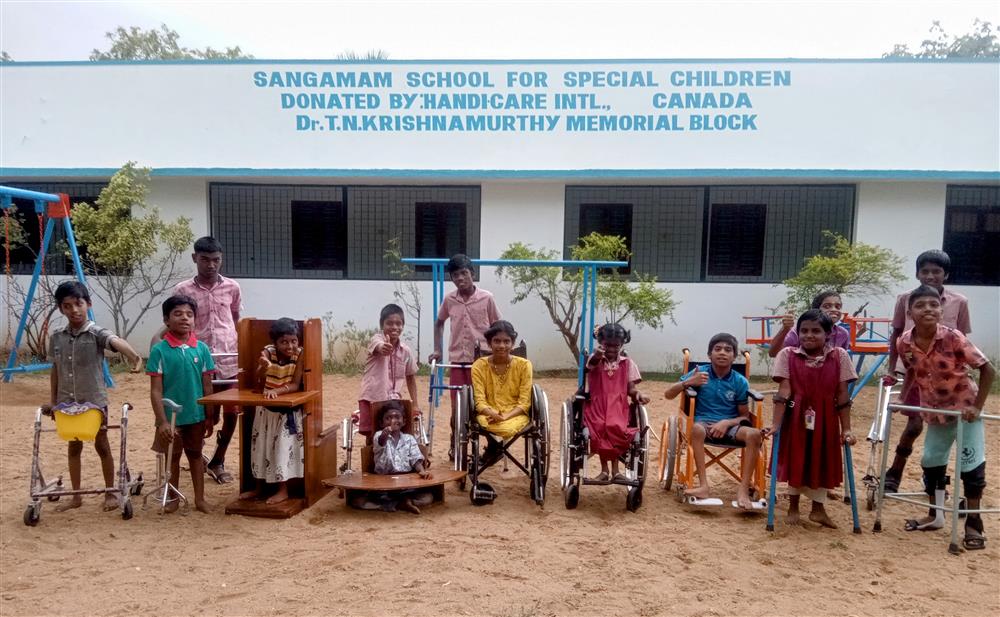Providing assistive technology for children in rural Asia
- Solution
- Paediatric Assistive Technology Provision Programme
- Organization
- Amar Seva Sangam
- Country of Implementation
- India
- Region
- Asia & Pacific
- Subregion
- South Asia
- Start Year
- 2020
- First published
- 10.02.2023

Solution details
“AT access changes the lives of children with disabilities, enabling development, participation, and inclusion.” S. Sankara Raman, Secretary, Amar Seva Sangam
Amar Seva Sangam, an Indian NGO and service provider, is based in the southern province of Tamil Nadu. In 2020 it started the Paediatric Assistive Technology (AT) Provision programme, providing information on adequate AT with a focus on children in rural areas. The programme consists of an initial assessment of needs, a training programme for rehabilitators, AT assessment camps, support in finding sponsors, and advice on accessing government funding. Between 2020 and 2022 there were 24 AT assessment camps held, applying more than 1,500 assistive products.
Problems Targeted
There are many barriers to accessing AT in rural areas of low- and middle-income countries, including physical and social barriers, costs and supply, and limited rehabilitation professionals.
Solution, Innovation and Impact
Amar Seva Sangam’s Enabling Inclusion Programme developed an institutional-level survey based on the World Health Organization’s Priority Assistive Products List and Principles of Assistive Technology access. An action plan and framework have been created, addressing each recommendation from the survey. Actions include capacity-building of rehabilitation staff, AT guidebooks for service providers, and education programmes for service users and families on using assistive products. By mid-2022 some 929 assistive products had been delivered to users, with an additional 644 under order; 99 rehabilitation specialists received training in assessment, prescription, and order fit/adaptations; and three therapists have been trained as AT leads to guide, monitor, and evaluate.
Funding, Outlook and Transferability
The programme is funded and implemented in partnership with Handi-Care International, the Azim Premji Foundation, and other small Canadian foundations. When families apply, an assessment is conducted to analyse the family’s ability to contribute to the purchase. Service providers help families apply for government funding and are also encouraged to find local sponsors. From 2023 to 2026 Amar Seva Sangam aims to support 3,200 additional children by providing AT across Tamil Nadu, while exploring opportunities for other assistive products. Moreover, a collaborative study with the University of Toronto is planned to evaluate the programme’s impact and address any gaps. Several other local NGOs have begun using parts of the programme through a licencing model and have indicated that they are interested in replicating the entire programme.
Media
Related information
- Connections
- 2
-
Organization
- People